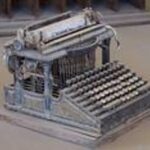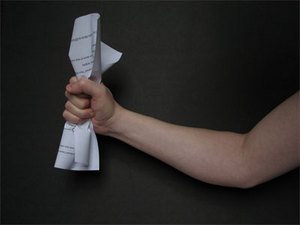Editing is every writer’s least favorite task because it means clipping and pruning those sentences you worked so hard to formulate. Editing a short story is sometimes even harder than editing articles because writers are usually more attached to fiction work. The key to editing your short story effectively is taking yourself away from the project and approaching it from a logical point of view, which isn’t always easy.
Read It Through Several Times
Sometimes, the easiest way to spot mistakes and awkward wording and poor characterization is simply to read your work. Don’t focus on the grammatical, spelling and punctuation errors during these read-throughs — that will come later. Instead, look for plot holes and cadence and continuity. Grammatical and technical errors are easy enough to fix during a final edit, but it is the substance of the short story itself that needs to be edited as quickly as possible. There’s no use editing a paragraph for grammar when it might very well change or cease to exist by the time you get to the final draft.
Cut Words Wherever Possible
Wordy short stories rarely make it to publication and most magazines have very strict guidelines to which you must adhere. When you’re editing your short story, focus on pruning sentences down to their most basic components rather than adding modifiers and other extraneous phrasing. This is something that should be accomplished during the editing and revision process rather than while you are writing because you want the freedom to write creatively.
Examine the Beginning
With short stories especially, the first few sentences must be riveting if you want your readers to continue to the last paragraph. Examine the beginning and decide whether or not it is the best place to start — would it be more exciting if you began with the fifth paragraph? If so, it’s time for some clever rearranging. Editing your short story means looking at all aspects of your writing and making sure that you’ve told it in the best way possible.
Reveal Characters Slowly
As you’re conducting the edits for your short story, make sure you haven’t come right out and told the reader exactly who your characters are from the very first paragraph. Characters should be revealed slowly through description and dialogue, gradually coming to life on the page. Your protagonist’s good will can be demonstrated through his active Sunday mornings at the local homeless shelter or his desire to help out his family members. Your antagonist might yell at small children or start fights for fun. These are more obvious examples, but work toward that old maxim of “showing rather than telling”.
Use Dialogue with Purpose
If you’ve taken any writing classes or read much about dialogue, you know that it serves three distinct purposes. The first is to supply information about at least one of the plots taking place in the story. The second is to give the reader an idea for the character’s personality and motivation. The third is to establish a relationship (either positive or negative) between all characters in a conversation. Make sure that when you write dialogue, you are covering all of these basis. When you edit your short story, look for areas where dialogue is unnecessary and either cut or change them.
Look for Inadequate Pacing
The final tip for editing your short story is to look for inadequate pacing. Short stories are significantly more fast-paced than novels because you have far fewer pages in which to get to the end, so make sure you don’t have an entire page full of description or two pages of meaningless dialogue. Something should constantly be happening and each sentence should serve to further the plot. This doesn’t mean that you can’t include colorful descriptions, but they must be more tightly worded than they would be in a novel.





